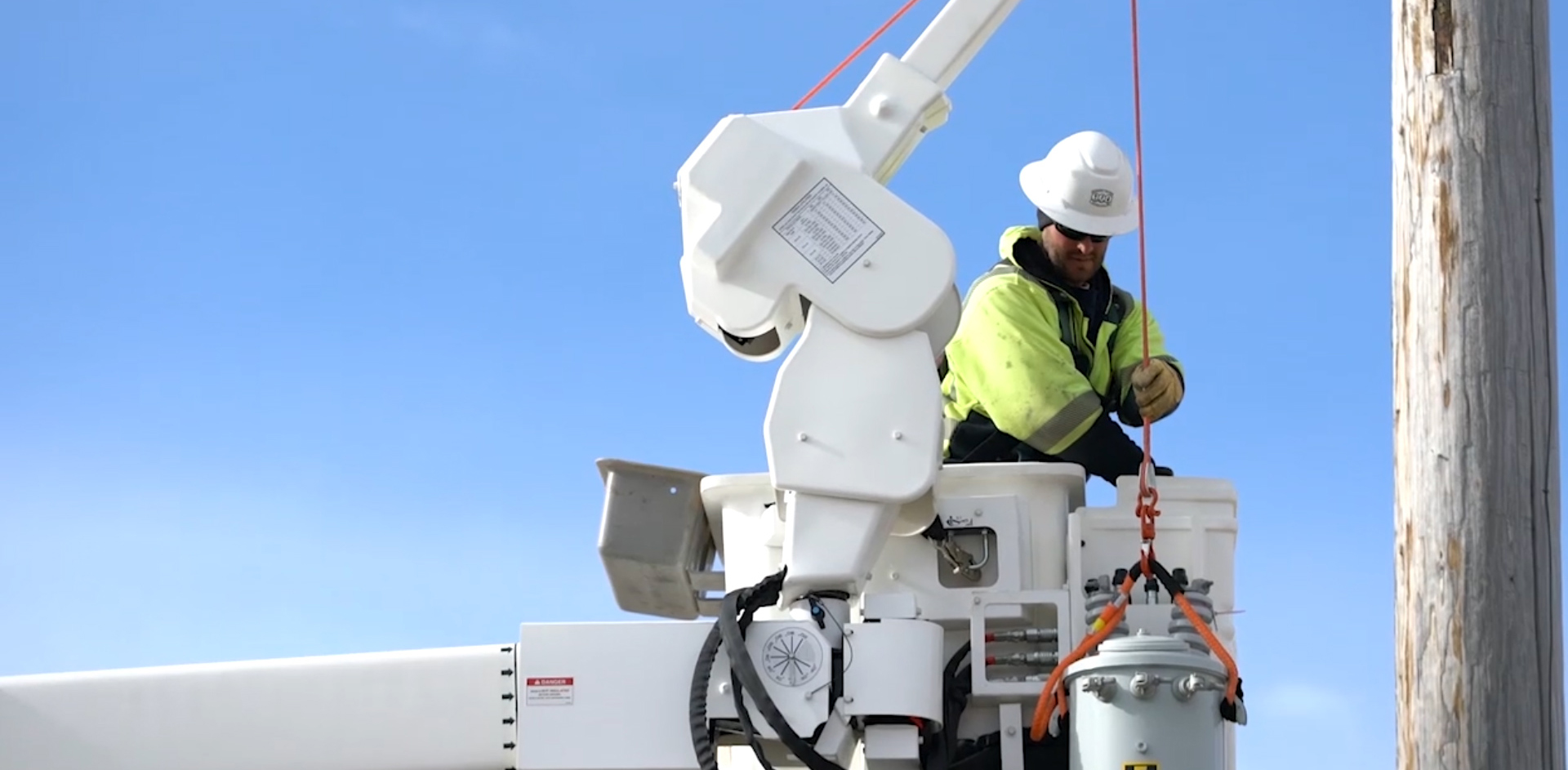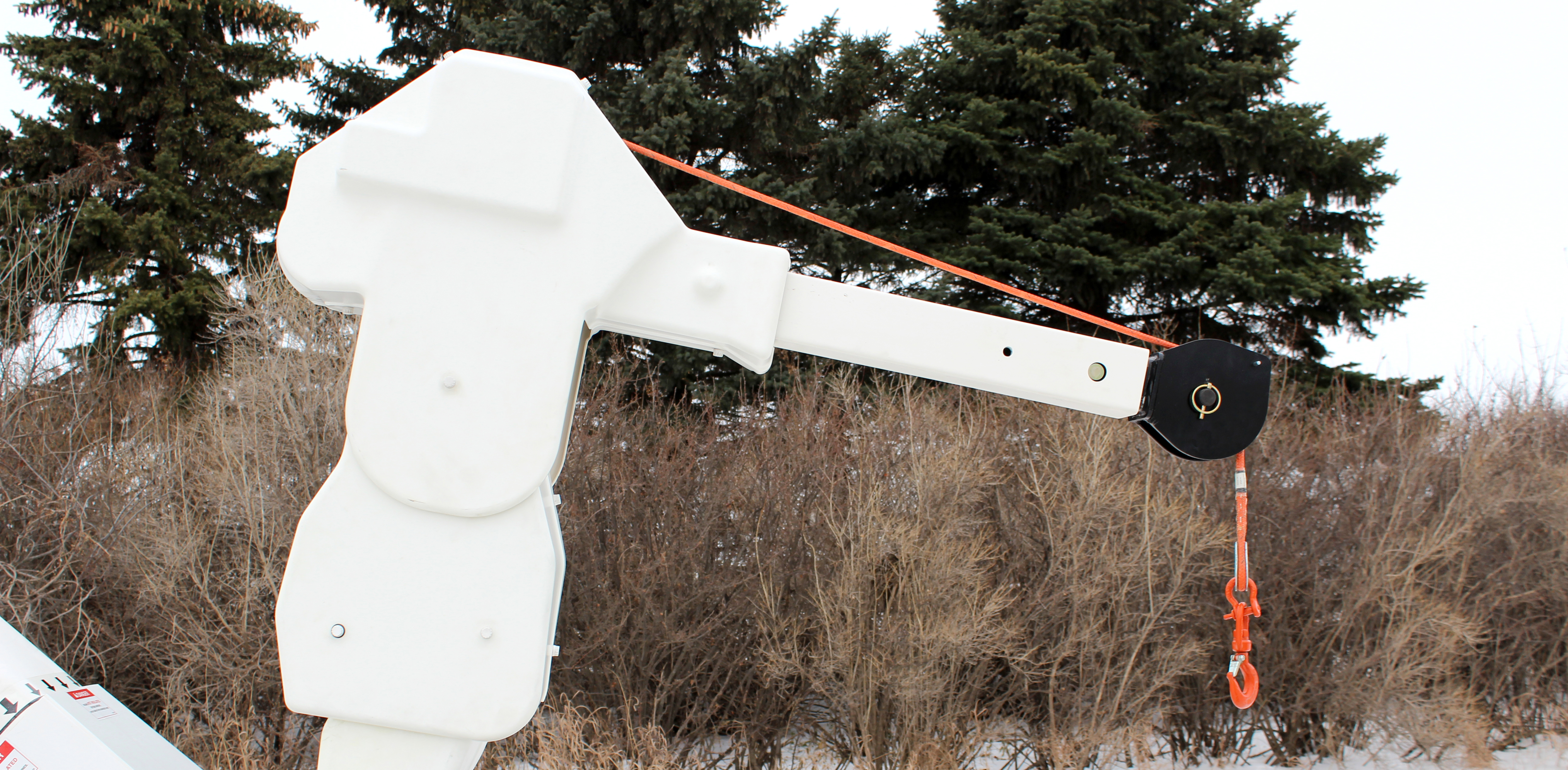Best Practices When Handling Transformers with Your Bucket Truck, Part 3: Knowing Your Load

Over the last couple of weeks, we covered the first 2 parts of this series on knowing your jib and some best practices on inspecting your jib before handling transformers in this 4-part series. This week, we move to the third area that line workers should know: Knowing Your Load.
Knowing how to read the load chart is critical for safe use and long life of the bucket truck. Load charts provide the maximum capacity of the bucket truck depending on the boom and jib or load line positions. These values are not suggestions; they are absolutes. If exceeded, the stability or strength of the unit is compromised.
Understand the Lifting Capacity
Likewise, the winch capacity cannot be used as an indicator of allowable lifting capacity, the winch must lift the maximum capacity, which may greatly exceed the capacity at your working position. The operator must know the load weight and the boom configurations required through entire load travel path. The load chart provides capacities at various boom angles, load radii or jib extensions. As the load is positioned farther from the boom tip the capacity, in most cases, is reduced.
Use Technology to Understand the Load
Most bucket trucks have the same capacity over the side as well as the back. If there are restrictions the information will be provided on the load chart or other labels at the operator station. Terex Utilities designed its Load Alert system as an optional operator aid to assist the operator in knowing if the loading condition is near capacity. It monitors and analyzes the truck’s jib and basket capacity and provides visible and audible alarms when an overload has been detected to aid users. A monitor display will read ‘overload’ when one occurs, and the background will turn red. The display also shows the load amount and will warn when the operator is approaching maximum capacity. It does not absolve the operator of their requirement to know the loading and capacities.
Know the Transformer Weight
There are a lot of differences in the size, weight, and shape of transformers. A 3kVA transformer weighs just 50 pounds, while higher capacity transformers can weigh upwards of 1000 pounds. Transformers will include the weight on the unit ID tag, but when removing old transformers, the weight may be missing or illegible. It is a good idea to refer to the brand name, model, and type of core to identify the weight. This information is usually available from the transformer manufacturer.
Be Mindful of Weather
Finally, it is important to be able to safely handle the load in the weather conditions. If it is windy, handling loads in gusty wind is hazardous and not recommended. It’s better to wait until the weather is suitable to do the work.
Next week, Utility Pros will share the final post in this 4-part series – Understanding Proper Set Up of your Bucket Truck.
In the meantime, if you’re bucket truck needs a part replaced or service or if you’re interested in Load Alert, contact us here.
Related Posts

Best Practices When Handling Transformers with Your Bucket Truck, Part 1: Knowing Your Jib
When it comes to lifting transformers, bucket trucks equipped with jibs are one of the handiest tools available to line workers. However, not all jibs are the same and the user should evaluate the type of work when choosing the equipment for the job...
Continue Reading

Best Practices When Handling Transformers with Your Bucket Truck, Part 2: Inspecting Your Jib
Most bucket trucks sold to the utility industry are equipped with jibs, which makes it very handy to lift and handle transformers. However, not all jibs are the same and the user should evaluate the type of work when choosing the equipment for the job.
Continue Reading

Best Practices When Handling Transformers with Your Bucket Truck, Part 4: Understanding Proper Set Up
Here is the final part of the series on Best Practices When Handling Transformers with Your Bucket Truck. Today, we cover our last part on what line workers should know: Understanding Proper Set Up...
Continue Reading

.png?sfvrsn=cfc0900d_0)